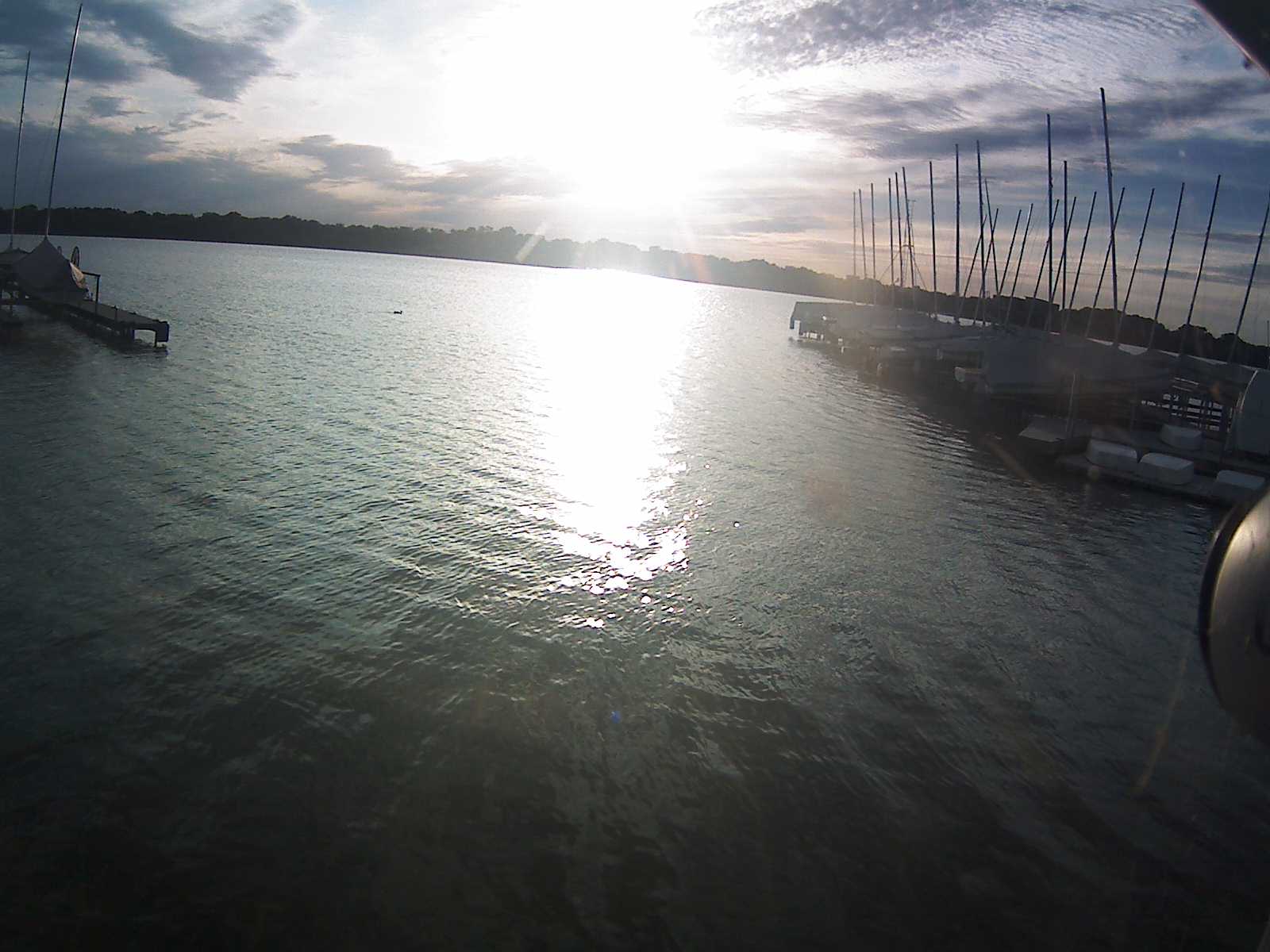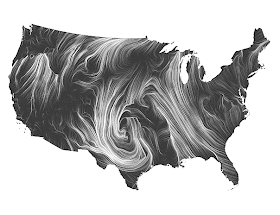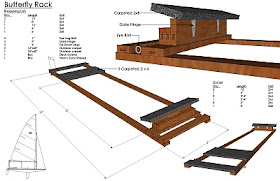1/8/11 RACING
at 1.09.2011
by Pam
What a pretty day we had! Absolutely beautiful day and today it’s snowing. That’s Texas!
Okay, here’s the deal. Doug and I sat on the Tollway for an hour on our way to the lake. When we got to the lake, Tom and Amber, our heroes of the day, were apparently having some fun setting and resetting the course so we were able to sit down with Roger and watch the start of the first race. There was only one fleet boat up for grabs and Doug was itching to sail so I opted to watch and he went to rig. I told him I’d switch with him for the third race but really didn’t plan to. I’ve learned that if I’m on the same race course with Doug that he’s distracted and only halfway competing but when I abstain, he kicks it up a notch and learns at an accelerated rate and I usually learn more about the boat and my competition by not racing and having him race alone and then quizzing him afterwards. It worked like a charm yet again.
Frank was launched in the first race finishing well ahead of the fleet with Bruce and Gary finishing second and third. Doug calls this the Frank Factor (more later). The second race finished with Bruce, Doug and Frank and the third was Doug, Bruce and Frank. Sandy, normally in the top finishers, instead demonstrated the impact of not having a change of warm dry clothes in the car. Doug was extremely pleased with Tom and Amber for their quick rescue when Sandy conducted his cold water immersion drill in 40+ degree water. Excellent work guys! All is not lost Sandy. Read up and see if some of Doug’s insights might be useful for next time.
An interesting thing is happening with Doug these days. He can now see so his sailing style is beginning to change a bit and he’s re-learning to sail in some ways. I’m always amazed at how many things he’s keeping track of in his head when he’s on the water. He’s a multi-tasker extraordinaire on the water. Off the water …not so much … where did that vang go? Doug was sailing the old blue fleet boat with my 2 year old sail, a chewed up centerboard, a super short tiller extension and a short main sheet such that to let the sail out downwind, he’d have to let go of the main sheet and let it run to the end of the knot on the boom and he would gybe just before the mark and grab the end of the sheet in the middle of the gybe in order to be able to go upwind.
So here’s what I learned (in the world according to Doug):
1. Wind direction - Doug didn’t have boat speed and his competition did. This isn’t a big problem because the fleet boats can be competitive in the shifty breezes of the North, West, and East but not the more steady South breeze. The puffy North breeze is his best shot in a fleet boat and that’s what fate handed him. Even though Doug doesn’t sail overly aggressively in the Butterfly fleet, he’ll be aggressive with the faster boats in a South breeze and more lax in the shifty breezes.
2. Starts - I’m repeatedly told there is no excuse for not getting a good start in the Fly fleet since no one is really pushing the starts like Lasers do and there are always holes to be found.
3. Upwind - Doug considers White Rock to be flat water and never foots. He is constantly pinching up and testing to see how high he can sail and where the wind is coming from at any given moment. This allows him to find subtle shifts and take advantage of the lifts. He didn’t see anyone else doing that but noticed Bruce and Frank, in particular, not doing that which worked to his advantage. Also, Doug sails with no vang upwind to allow the vang lever to over rotate which he says adds about six square feet of sail area and when the main is pulled in it hooks the top of the sail to windward which gives the sail a more three dimensional shape.
4. Shifts - With relatively short legs, the shifts are more persistent with slight variations. Meaning it will swing leftish and oscillate a little on the left and then swing rightish and oscillate a little on the right. The bulk of the fleet appeared to be tacking on every header. Doug was picking his shifts and sailing through the smaller headers in order to stay toward the middle and not end up on one side or hit the lay line too soon. The best shifts to pick are the ones that have pressure so Doug tacks when there is a knock and he’s in dark water. He said he made gains on Bruce this way in the last work of the second race.
5. Tacking - The masts of some boats don’t rotate easily so if the vang lever doesn’t rotate there is essentially an air brake that has formed in the middle of the tack. Doug developed a tacking technique of hitting the boom with his elbow to force the vang lever over right in the middle of the tack. He loves how fast the Fly tacks.
6. Reach/Downwind - When sailing close to shore there are a lot of puffs and a lot of people were wasting the puffs. Doug caught and passed Burton on the top reach in the third race because Burton headed straight for the mark and Doug went below him and stretched the puff by bearing off and then heading up and sailing a hotter angle when the puff ended. The hotter angle means the wind shifts forward so Doug never sailed in Burton’s bad air and sailed right through his wind shadow. Bruce was in the lead and also headed straight for the mark which allowed Doug to catch him right at the mark and gybe inside. The rule of thumb is never to head straight for the mark on a reach or downwind. Also, Doug started putting his vang on tighter than he’d like on the reaches and runs to keep the drive at the top of the sail. Without the vang it was spilling air.
7. Cooperation - In the bottom reach of the third race, Bruce went straight for the mark and Doug and Burton went high. If Burton and Doug had worked together they could have created a wind shadow before the mark rounding that would have put Bruce in third place. Instead Bruce rounded first with Doug second and Burton in a solid third.
8. Frank Factor - Doug really enjoys watching Frank sail. He thinks he’s an excellent sailor. He has observed that Frank has a tendency to sail on the outside of the group which means if he picks the right side, he will launched in front of the fleet and if he picks the wrong side, he’ll be way back. Due to vision problems, Doug has always sailed his competition but lately, if he thinks his competition is making a mistake and taking a header he doesn’t like, he’ll leave his competition and sail the course instead. Frank is the one factor he can never discount and he always has to keep track of where he is because he’s either very right or very wrong.
9. Beating Doug - As I understand it, Doug is always beatable by the bulk of the fleet when he’s in a fleet boat. In a South breeze, he isn’t much of a factor because the bulk of the fleet has boatspeed and the fleet boats don’t. In the puffy breezes, the only way he can gain is if he separates so if you cover him, he can’t gain on you. Or so he says!
So this is my typical debrief from Doug after sailing. Too much for me to implement but enough for me to know that few people sail a perfect race and there are opportunities all over the course to move up.
For what it's worth, Doug will often refrain from offering advice on the race course, but if you ask him, whether he’s ahead or behind, he’ll freely tell you what he sees as your best course of action even if it puts you ahead of him. He likes good competition and figures the better everyone is, the more fun he’ll have.









